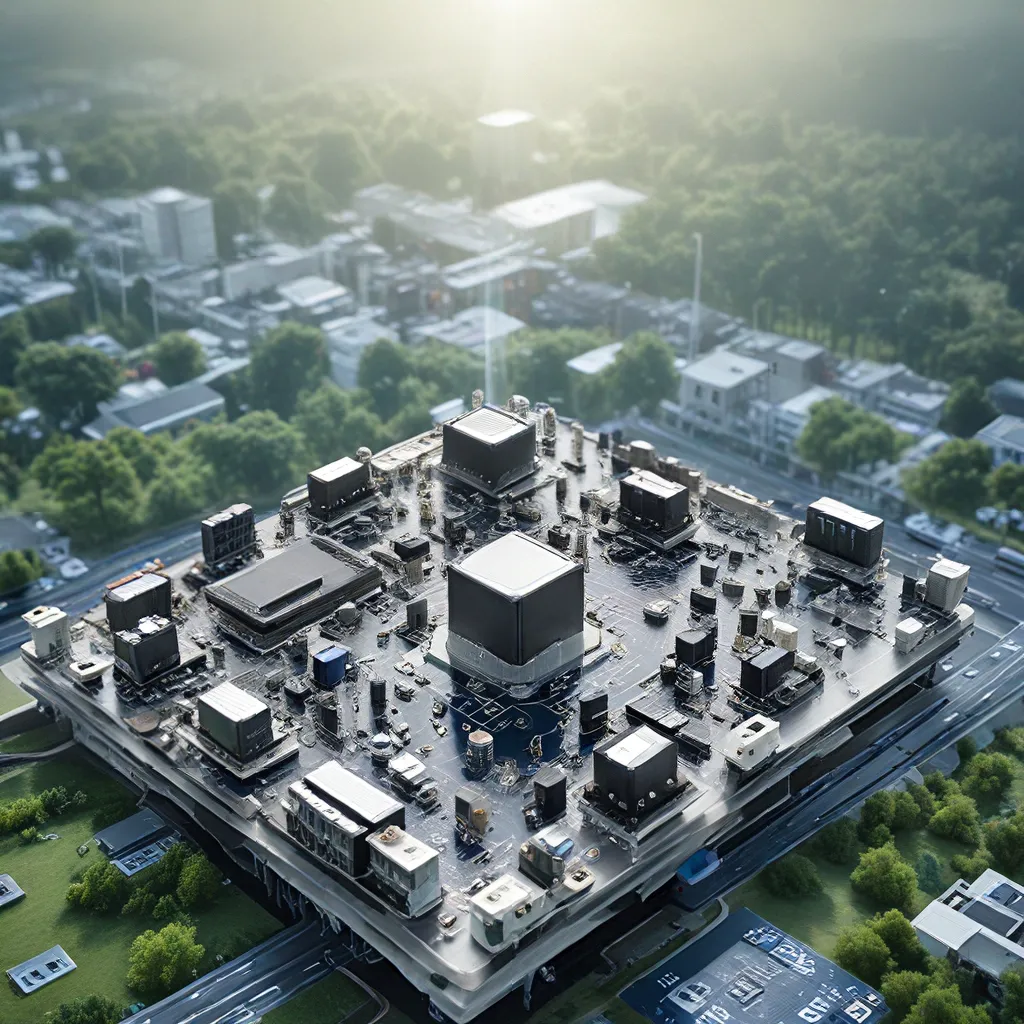
The Rise of Self-Powered Systems
As the world becomes increasingly connected and digitized, the demand for efficient, reliable, and sustainable power sources for sensor networks and IoT (Internet of Things) devices has never been more pressing. Traditional battery-powered systems face limitations in terms of lifespan, environmental impact, and form factor flexibility. To address these challenges, self-powered systems have emerged as a promising solution, harnessing various forms of energy harvesting technology to generate and manage their own power.
Recent advancements in the field of energy harvesting have opened up new avenues for powering sensor-driven applications. From piezoelectric and triboelectric generators that convert mechanical energy to electrical power, to thermoelectric and biofuel cell systems that harness thermal and chemical energy, these technologies are enabling a new era of sustainable, maintenance-free, and flexible electronic devices.
Diversifying Energy Harvesting Approaches
One of the key developments in the self-powered systems landscape is the integration of multiple energy harvesting methods into a single device. By combining complementary transduction principles, such as piezoelectric and triboelectric effects, or thermoelectric and solar energy, hybrid energy harvesters can improve overall efficiency and broaden the range of applicable scenarios.
Researchers have explored various hybrid configurations, including piezoelectric-thermoelectric, triboelectric-electromagnetic, and solar-triboelectric systems. These hybrid designs not only enhance power output but also enable adaptive energy generation based on the surrounding environment and user activities.
Moreover, the integration of energy storage components, such as supercapacitors and batteries, with energy harvesters has further advanced the capabilities of self-powered systems. This approach allows for efficient energy management, enabling devices to store and utilize the generated power as needed, ensuring a reliable and continuous power supply.
Empowering Sensor Networks with Self-Powered Sensing
Beyond just powering electronic devices, self-powered systems have also revolutionized the field of sensor networks. By leveraging energy harvesting technology, self-powered sensors can operate without the need for external power sources, overcoming the limitations of traditional battery-powered sensors.
These self-powered sensing systems can monitor a wide range of physical, chemical, and biological parameters, including pressure, humidity, temperature, glucose levels, and pH. The integration of active sensing mechanisms, where the output electrical signals themselves serve as the sensing signals, has further enhanced the functionality and versatility of these self-powered sensors.
Moreover, the wireless data transmission capabilities of self-powered sensors have enabled the seamless integration of sensor networks into the Internet of Things (IoT) ecosystem. This integration facilitates real-time data collection, remote monitoring, and automated decision-making, paving the way for smart city, industrial, and healthcare applications.
Unlocking Actionable Capabilities with Self-Powered Actuation
The capabilities of self-powered systems extend beyond just sensing; they have also found applications in actuation and control systems. By harnessing the electrical energy generated through various energy harvesting methods, self-powered systems can power actuators, enabling a wide range of functionalities without the need for external power sources.
Researchers have demonstrated self-powered systems that can control microfluidic devices, trigger drug delivery, and drive microrobots. These self-powered actuation systems leverage principles such as electrowetting and electrical stimulation to enable precise control and automation in diverse applications, from biomedical to industrial domains.
The integration of self-powered actuation with sensor networks further expands the capabilities of IoT systems, enabling closed-loop control, real-time decision-making, and autonomous operation in various scenarios.
Empowering Intelligence through Self-Powered Systems
As the world progresses towards the era of artificial intelligence and the Internet of Things, the role of self-powered systems becomes increasingly crucial. By seamlessly integrating energy harvesting, sensing, and actuation capabilities, these systems are poised to become the next-generation interface for human-machine interaction.
Researchers have developed self-powered systems that can recognize gestures, interpret sign language, and enable touch-free control of digital devices. The synergy between self-powered sensors and machine learning algorithms has further enhanced the intelligence and functionality of these systems, paving the way for intuitive, hands-free, and seamless interactions between humans and technology.
As the sensor network and IoT ecosystem continues to evolve, the integration of self-powered systems will be crucial in addressing the challenges of energy management, sustainability, and user-friendly interfaces. By empowering devices with the ability to generate, manage, and utilize their own power, these self-powered systems are set to redefine the way we interact with and leverage sensor-driven technologies in the years to come.
Overcoming Challenges and Driving Future Advancements
While the progress in self-powered systems has been remarkable, there are still challenges that need to be addressed to enable large-scale practical applications. Issues such as long-term stability, reliable power management, and scalable manufacturing require continued research and development.
Ongoing efforts are focused on improving materials, optimizing device structures, and enhancing energy conversion efficiency to make self-powered systems more robust, versatile, and cost-effective. Additionally, the development of standardized manufacturing processes and performance calibration methods will be crucial for large-scale deployment and consistent performance across different devices.
As the sensor network and IoT landscape continues to evolve, the integration of self-powered systems will be a key driver of future advancements. By empowering devices with sustainable, flexible, and intelligent power management capabilities, these self-powered systems are poised to transform the way we interact with and leverage sensor-driven technologies in the years to come.
Sensor Networks is at the forefront of this transformation, providing a platform for professionals, researchers, and enthusiasts to explore, discuss, and collaborate on the latest developments in the field of sensor networks and IoT. Stay tuned for more insights, innovations, and advancements in this dynamic and rapidly evolving space.